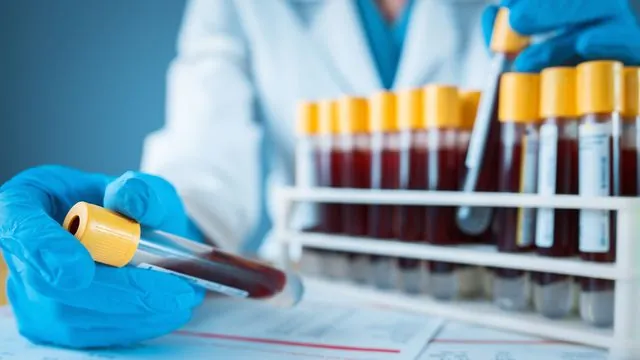
Breakthrough Diagnostic Method Unveils Hidden Disease Markers in Blood
2024-11-19
Author: Wei Ling
In the relentless pursuit of timely disease detection, medical researchers have unveiled an innovative diagnostic method that significantly reduces interference from common blood proteins, potentially revolutionizing patient outcomes. A dedicated team from Michigan State University, in collaboration with experts from the Karolinska Institute and the University of California, Berkeley, has developed a technique that delves deeper into plasma proteins, identifying critical biomarkers that allow for earlier disease detection.
"The sooner we can identify disease markers, the better the outcomes for patients," said Morteza Mahmoudi, an associate professor in the Department of Radiology and Precision Health Program at MSU's College of Human Medicine. "Not only does this method facilitate earlier diagnosis through a simple blood test, but it also empowers physicians to devise more effective treatment plans based on the nature of the illness—whether benign or metastatic."
Recently published in the prestigious journal *Nature Communications*, the research paper titled "Small Molecule Modulation of Protein Corona for Deep Plasma Proteome Profiling" outlines this groundbreaking methodology. The team's approach effectively reduces the masking effects of abundant plasma proteins, which have historically obstructed the detection of vital low-abundance biomarkers.
"By minimizing these interactions, we can increase the visibility and identification of low-abundance proteins, which are often key in disease detection," Mahmoudi elaborated. This enhancement allows for a more precise and early identification of diseases, providing a significant leap in diagnostic capabilities.
How This Revolutionary Method Works
By introducing small molecules into blood samples, the researchers can highlight essential proteins on the surface of nanoparticles. This makes them far easier to detect using mass spectrometry—a cutting-edge technique that sorts and analyzes ionized particles using electrical and magnetic fields.
"Our initial experimentation involved carefully selecting small molecules to reduce interactions between highly abundant proteins and nanoparticles," Mahmoudi described. "With mass spectrometry, we achieved an impressive seven-fold increase in proteome coverage, enabling us to uncover hidden biomarkers."
Transforming Precision Medicine
This new diagnostic technique greatly contributes to the evolution of precision medicine—an approach that tailors treatments based on a patient’s unique genetics, environment, and lifestyle. Unlike the conventional one-size-fits-all methods, precision medicine aims to deliver targeted healthcare solutions, particularly in cancer treatment, where genomic profiling can lead to more favorable outcomes and fewer adverse effects.
At institutions like MSU, precision health programs explore various dimensions of health, pushing the boundaries of medical science.
"We're thrilled about the potential of this novel method to identify diverse biomarkers across a spectrum of diseases," Mahmoudi stated. "Its vast capabilities promise to enhance our delivery of precision medicine exponentially."
This promising development not only signals a new era in disease detection but also holds the potential to reshape the future of medical treatments, making a personalized approach to healthcare a reality for millions. The continual advancements in diagnostic methods like these herald a future where early identification of diseases could save countless lives.



 Brasil (PT)
Brasil (PT)
 Canada (EN)
Canada (EN)
 Chile (ES)
Chile (ES)
 España (ES)
España (ES)
 France (FR)
France (FR)
 Hong Kong (EN)
Hong Kong (EN)
 Italia (IT)
Italia (IT)
 日本 (JA)
日本 (JA)
 Magyarország (HU)
Magyarország (HU)
 Norge (NO)
Norge (NO)
 Polska (PL)
Polska (PL)
 Schweiz (DE)
Schweiz (DE)
 Singapore (EN)
Singapore (EN)
 Sverige (SV)
Sverige (SV)
 Suomi (FI)
Suomi (FI)
 Türkiye (TR)
Türkiye (TR)